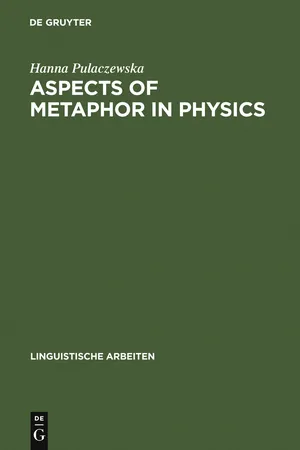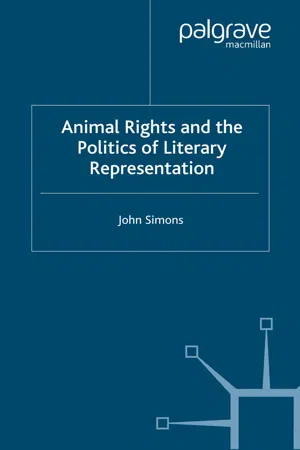Languages & Linguistics
Anthropomorphism
Anthropomorphism is the attribution of human characteristics to non-human entities, such as animals, objects, or natural phenomena. In the context of language and linguistics, anthropomorphism can be seen in the use of human-like traits to describe non-human elements, which can influence the way people perceive and interact with these entities. This concept is relevant in understanding the role of language in shaping human cognition and behavior.
Written by Perlego with AI-assistance
Related key terms
1 of 5
5 Key excerpts on "Anthropomorphism"
- eBook - PDF
More Than Machines?
The Attribution of (In)Animacy to Robot Technology
- Laura Voss(Author)
- 2021(Publication Date)
- transcript Verlag(Publisher)
By definition, it refers to the attribution of human characteristics to something. In the con-text of robotics and HRI, however, Anthropomorphism is o ften used to mean something else. Firstly, the term is often (mis)used to describe the human-like design or behavior of a robot, instead of the phenomenon of attribution (Julia Fink, 2014, p. 63; cf. Bartneck & Forlizzi, 2004). This disregards that a robot “is not anthropomorphic per se, but only in so far as it gives rise to an-thropomorphic processes in a given user and situation” (Persson et al., 2000, p. 1). Secondly, the term Anthropomorphism is frequently used to describe a much wider phenomenon: the attribution of characteristics of living beings in general to robots. Characteristics such as aliveness, emotionality, personal-ity, and sociality are not unique to humans, but apply to a much wider group of living entities. Rarely, the term “zoomorphism” is used for the attribution of characteristics of nonhuman animals to robots. A “zoomorphic robot” is usually understood as a robot with an animal-like design. In the following chapters, we will encounter several instances of features being attributed to robots that sometimes are characteristic to living beings in general (such as sensory experiences, intentions, or emotions) and some-times are more specific to human beings (such as long-term life goals). In some existing concepts, this phenomenon is understood to be one level of an-thropomorphism (e.g. Persson et al., 2000). But for the purpose of this book and the phenomena it describes the wider term “attribution of animacy” is more adequate. “Animacy” is a grammatical and semantic feature meaning the “the quality or condition of being alive or animate” (OED, n.d.-a), the adjective “animate” meaning “endowed with life, living, alive” (OED, n.d.-b). Their antonyms “inanimacy” and “inanimate” will also play a role in this book. - eBook - PDF
Aspects of Metaphor in Physics
Examples and Case Studies
- Hanna Pulaczewska(Author)
- 2011(Publication Date)
- De Gruyter(Publisher)
Anthropomorphism is the name attached to the latter. The former has been taken much less notice of, and has not yet been assigned a name. Together they form a (nameless) category of conceptual and verbal processes in which the boundary between human and inanimate is obliterated: human subjects can experience the processes concerning 267 ibid.: 350. 268 ibid.: 352-353. 269 ibid.: 356. 270 ibid.: 358-359. 141 e.g. astrophysical or atomic systems, and the systems in question can be experiencers of these processes. 271 The obliteration of the boundary, realised in such a two-fold way, is the ubiquitous underlying metaphor using human cognitive, emotional, and bodily experience as an explanatory principle for the world. We said before that the final aim of exact sciences is to gain the same degree of certainty in describing the world of nature which we have concerning that which we subjectively ex-perience, and that things which are accessible to us only through observation and excluded from the subjectively knowable are excluded from the sphere of certain knowledge because the only knowledge directly available to us is that of ourselves. We think that through the transfer of themselves to the world Out there', which they access only indirectly through observation of instruments, the scientists involved in an act of interpretation are searching to simulate a psychological condition of certain knowledge. Such a simulation is particularly tempting where there is a large amount of instrumental and theoretical mediation between the physical situation under study and the scientist, in which it is not clear what has been observed. This mediation invalidates the other way to construing the sense of cognitive certainty: the Cartesian objectivity, which is the official choice of the modern Western science. - J. Simons(Author)
- 2001(Publication Date)
- Palgrave Macmillan(Publisher)
116 6 Anthropomorphism: The Non-Human as Human This chapter addresses the issue of Anthropomorphism. For the purposes of my argument I will treat this as signifying the representation of animals as if they were human. From the perspective of reproduction this means that Anthropomorphism, or narratives that are based on the anthropomorphic, occupy a very particular space. To portray non- humans as if they were humans is to bring them into a discursive realm in which it is possible to give the illusion that their experience is being reproduced. This is achieved by the device of providing them with human characteristics and even human form, and by this means it becomes possible to speak of them as if they were human. The question thus arises as to whether or not anthropomorphic representation is always deeply penetrated by speciesism, as it could well be argued that however benevolent the intention of anthropomorphic narrative the result is always entirely to obliterate the non-human experience and to replace it entirely by the human. In this reading Anthropomorphism and anthropocentrism become inevitably connected in a speciesist equation. Need this be so? Against the grain of much thinking on animal rights I am going to argue that it need not be. I hope later to demon- strate that texts that adopt various forms of anthropomorphic repre- sentation can offer extremely powerful statements about the condition of non-humanity. It is also the case that the division between humans and non-humans is not necessarily (at least where the higher animals are concerned) as great as a rigorous avoidance and condemnation of all Anthropomorphism would suggest. In fact, as Jeffrey Moussaieff Masson has persuasively argued in three books, the non-human experi- ence can be made accessible by an Anthropomorphism which operates through the assumption that similar kinds of behaviour when exhib- ited in both humans and non-humans are the result of a shared set of J.- N. J. Enfield, Paul Kockelman, Jack Sidnell(Authors)
- 2014(Publication Date)
- Cambridge University Press(Publisher)
1.2.1 What is language? Linguistic anthropology cannot be seriously undertaken without a clear idea of the ontology of language and a full command of the formal and technical aspects of scientific approaches to language. We are dealing with a phenomenon that is unique in the animal world. Language is exceedingly complex, and the details of this complexity matter deeply for understanding how language defines us. When we refer to “language,” we cannot mean animal communication more generally – though of course language is one form of animal communication – nor can we mean to include metaphors, as in “body language,” “the language of dance,” or “the language of the bees.” The properties of human language show beyond doubt that it is unique. For example, to cite classic structuralist criteria, there is the double articulation or duality of patterning that links a generative phonological sys- tem to a generative semantico-syntactic system (Hockett 1960, Martinet 1980); there is the generative capacity that arises from paradigmatic relations in combination with syntagmatic relations, and the hierarchical/recursive properties of constituency (Bloomfield 1933, Harris 1951); there is the dis- placement by which speech events can be decoupled from narrated events and other non-immediate, including imagined, states of affairs (Jakobson 1990b); and of course, there is the referential capacity by which we can thematize entities and assert things about them in ways that are relatively truth-conditioned; and so on (cf. Hockett 1960, Vygotsky 1962, 1978, Halliday and Hasan 1976, Goffman 1981, Chafe 1994). A different kind of definitive criterion for language has been found in comparative research on the non-language-possessing creatures most close to us – that is, human infants and non-human primates – to see what they lack that language users have.- eBook - PDF
- Philip Lieberman(Author)
- 2006(Publication Date)
- Belknap Press(Publisher)
C H A P T E R 2 Primitive and Derived Features of Language T heories concerning the evolution of language often start with the premise that human language is disjoint from the communications system of other species. It is also the case that con-temporary scholars usually have little contact with animals other than their pets. In contrast, Charles Darwin, an English country gentleman, observed and interacted with a wide range of animals on a daily basis. Lacking contact with animals, one can suppose that they are incapable of transmitting any referential information and that their communications primarily convey emotional states and a limited repertoire of genetically specified calls, gestures, or facial ex-pressions that serve to signal food, the presence of danger, potential mates, and so on. And although linguists have long realized that human linguistic ability involves the interplay of different compo-nents that hinge on different biologic capacities, there is a tendency to treat an animal’s communication system as a simple unitary system. This chapter identifies some of the aspects of human linguistic ability that may be present in other species. This exercise is neces-sary if we are to identify the missing elements that may characterize human language. A full treatment of animal communication is not 28 my intent. As the previous chapter noted, human linguistic ability devolves from three basic capacities: (1) lexical capacity, the ability to learn and use words, (2) morphologic and syntactic processes that entail conveying meaning by systematic local modifications of words or of words that form sentences, and (3) phonetic and pho-nologic processes that produce and modify the sounds of speech that convey words and sentences. Other factors, such as turn-taking and social interaction, enter into human communication, but these elements are generally considered to be the core properties of hu-man linguistic ability.
Index pages curate the most relevant extracts from our library of academic textbooks. They’ve been created using an in-house natural language model (NLM), each adding context and meaning to key research topics.




